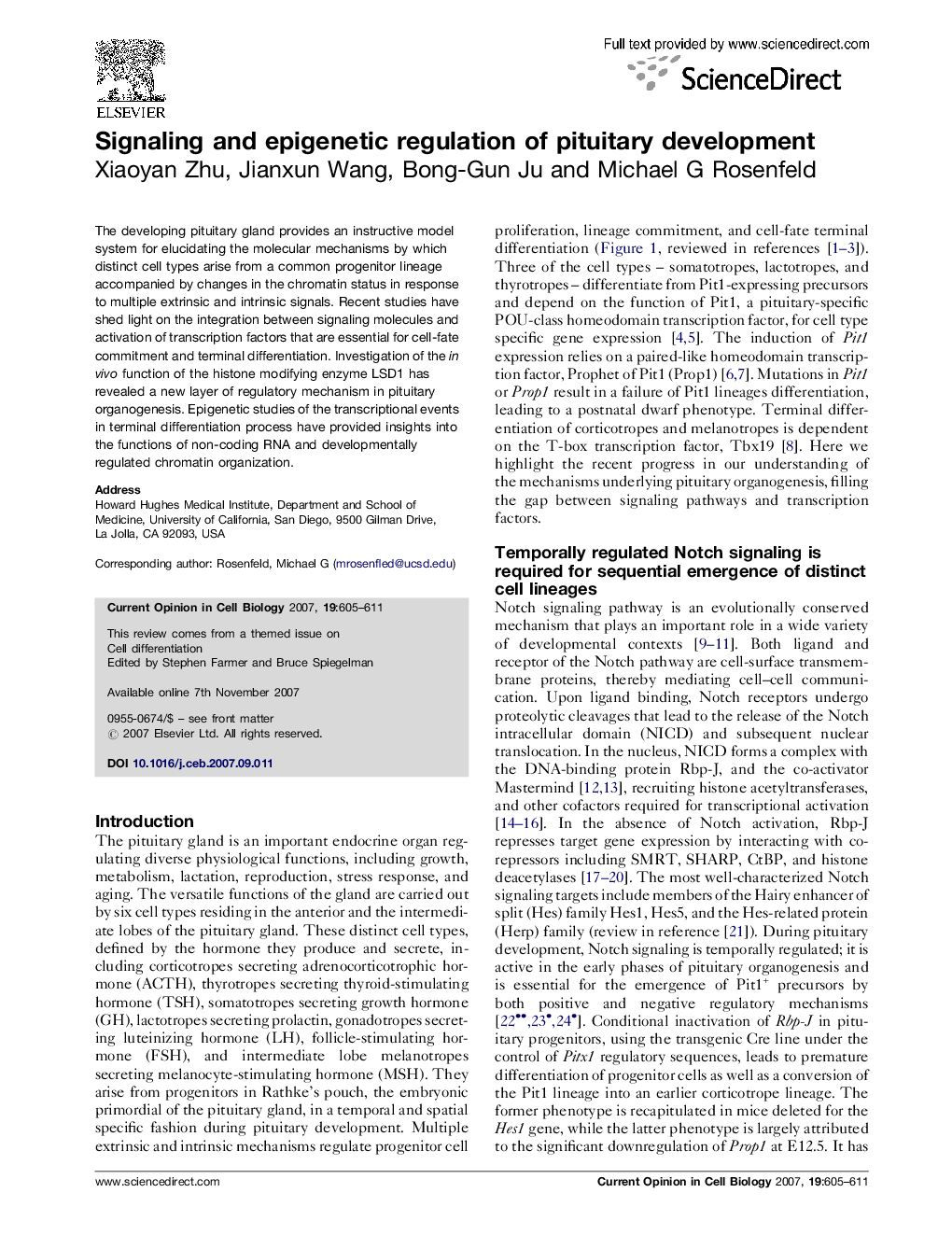| Article ID | Journal | Published Year | Pages | File Type |
|---|---|---|---|---|
| 2170138 | Current Opinion in Cell Biology | 2007 | 7 Pages |
The developing pituitary gland provides an instructive model system for elucidating the molecular mechanisms by which distinct cell types arise from a common progenitor lineage accompanied by changes in the chromatin status in response to multiple extrinsic and intrinsic signals. Recent studies have shed light on the integration between signaling molecules and activation of transcription factors that are essential for cell-fate commitment and terminal differentiation. Investigation of the in vivo function of the histone modifying enzyme LSD1 has revealed a new layer of regulatory mechanism in pituitary organogenesis. Epigenetic studies of the transcriptional events in terminal differentiation process have provided insights into the functions of non-coding RNA and developmentally regulated chromatin organization.
